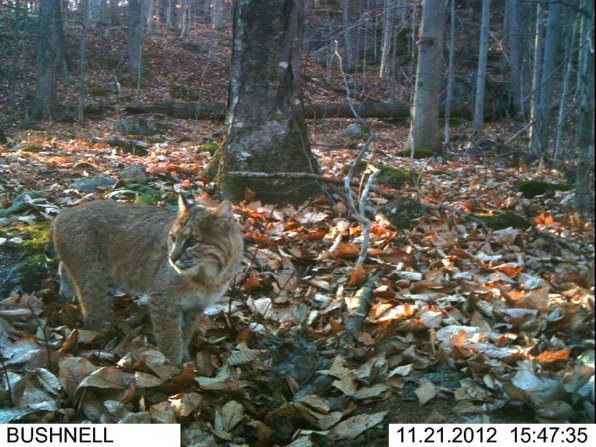If we’re being honest (which sometimes we actually are!), those tracks you found in the woods behind your house probably don’t belong to Bigfoot. But that doesn’t mean you can’t find out what they really belong to, maybe even without leaving the comfort of your Bigfoot hunting bunker.
Assuming that bunker has wi-fi, anyway. The fine people at the New Hampshire Fish and Game Department have long been there to help folks identify interesting artifacts discovered in the wild, but they’ve taken things to a new level recently through the use of social media.
You can take a photo of your funky find and post it to the department’s Facebook page, where a detailed explanation from an expert is often not far behind.
“Folks are curious about wildlife, and we’re the New Hampshire wildlife agency,” said Mark Beachesne, advertising and promotions coordinator for Fish and Game. “We’re there to connect people to life outdoors, so they come to us.”
That used to mean lugging your discoveries to an expert in person – Beachesne recalled one man who caught him at a fair in Massachusetts about six or eight years ago and withdrew a plastic bag full of moose poop from his pocket for inspection. But now it’s as easy as grabbing a pic with your cell phone – we don’t recommend trying to take a bear selfie – and posting it online.
A scan of recent interactions with the department included a photo of a coyote in a woman’s backyard and a discussion on how best to keep them away. Another resident asked for help identifying bird feathers (they belonged to a Ruffed Grouse, or partridge) and one more got some advice on scat (it came from a deer). If you’re concerned about something you see or are simply wondering what kind of animal may be leaving tracks behind, the department is there to help.
“We want people to be mindful and respectful for wildlife when they’re doing these things, but we are there to answer these questions,” Beachesne said. “We want to validate their experience and give them the resources to be able to discover on their own what it was. There’s so much out there on social media, and we’re able to fill in the blanks when people don’t know.”
There’s a “committee” of experts manning the department’s Facebook page, Beachesne said, meaning each query is handled by whoever is most qualified. That ensures the most accurate information possible, he said.
It also sparks discussion among citizens, which is something Beachesne said the department encourages. Sometimes the most important insight comes from an expert in the community. That’s helped make the Facebook page a huge hit for the organization so far.
“That level of engagement is gigantic for us,” Beachesne said. “Being a self-funded agency, we’re what they are; we are them and they are us. When they want to give their opinion, we give them a place to do so.”
And some tips on how to do so. Beachesne said when taking pictures of discoveries, it helps to put something like a dollar bill in the foreground, to provide scale.
It’s a far cry from the days where you had to carry moose poop in your pocket to get wildlife answers. Now it’s just a click of the camera and a click of the mouse away.
“It’s definitely a better wildlife encounter or experience for the other person,” Beachesne said.









